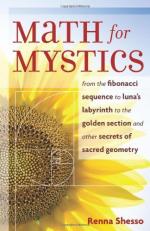|
This section contains 774 words (approx. 3 pages at 300 words per page) |

|
The Fibonacci sequence is a series of numbers in which each succeeding number (after the second) is the sum of the previous two. The most famous Fibonacci sequence is 1, 1, 2, 3, 5, 8, 13, 21, 34, 55, 89.... This sequence expresses many naturally occurring relationships in the plant world.
History
The Fibonacci sequence was invented by the Italian Leonardo Pisano Bigollo (1180-1250), who is known in mathematical history by several names: Leonardo of Pisa (Pisano means "from Pisa") and Fibonacci (which means "son of Bonacci").
Fibonacci, the son of an Italian businessman from the city of Pisa, grew up in a trading colony in North Africa during the Middle Ages. Italians were some of the western world's most proficient traders and merchants during the Middle Ages, and they needed arithmetic to keep track of their commercial transactions. Mathematical calculations were made using the Roman numeral system (I, II, III, IV, V, VI, etc.), but that...
|
This section contains 774 words (approx. 3 pages at 300 words per page) |

|


